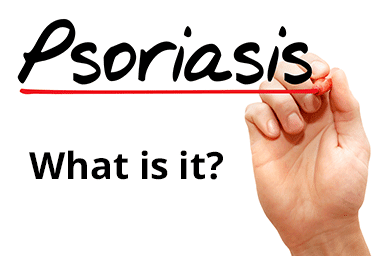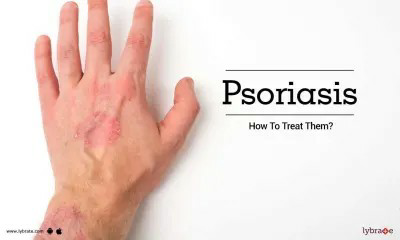An ongoing inflammatory condition called psoriasis causes patches of skin that are scaly, itchy, and frequently painful. The disorder is brought on by an overactive immune system, which causes skin cells to grow quickly. While moderate occurrences of psoriasis are manageable, more severe forms can have negative effects on one's health.
In-depth information about psoriasis, including its causes, signs, symptoms, available treatments, and effects on people's life, will be covered in this blog.
Psoriasis: What is it?
An ongoing autoimmune condition called psoriasis affects the skin and makes it red, itchy, and scaly. The illness is brought on by an overactive immune system, which stimulates the unusually rapid synthesis of new skin cells. In patients with psoriasis, this process takes just a few days instead of the normal month or so that it normally takes for new skin cells to develop and replace old ones.
Skin cells consequently build up on the skin's surface, resulting in thick, scaly areas. Although these patches can occur anywhere on the body, the scalp, elbows, knees, and lower back are where they are most frequently seen.
Because psoriasis is a chronic disorder, even though symptoms may come and go, the underlying issue still exists. Psoriasis does not yet have a cure, however there are numerous therapies that can help control the condition and enhance quality of life.
Psoriasis's root causes
Psoriasis' precise causes are poorly known. However, studies have demonstrated that it is a complicated illness brought on by a confluence of immunological, genetic, and environmental variables.
Psoriasis is a hereditary condition, which means that it frequently runs in families, according to studies on the subject. Even though psoriasis is not contagious to everyone, those who do are more likely to have a more severe case of the disorder.
Immune system: An hyperactive immune system is another theory for the origin of psoriasis. The body becomes inflamed as a result, which triggers the rapid synthesis of skin cells. Researchers think that a combination of hereditary and environmental factors cause this immune system malfunction.
Environmental Triggers: Psoriasis can also be brought on by environmental factors like stress, infections, and skin traumas. Beta-blockers, lithium, and antimalarial medications are a few examples of drugs that can cause psoriasis in some patients.
Psoriasis signs and symptoms
Psoriasis symptoms can differ from person to person and can be moderate to severe. The most typical signs are as follows:
Skin with elevated, crimson bumps and silvery scales
Around the patches, there may be stinging, burning, or pain.
Bruising skin that is dry and cracked
Pitted or thickened nails
stiff or swollen joints
Other medical conditions including psoriatic arthritis, which causes stiffness and joint discomfort, can develop as a result of psoriasis. Additionally, type 2 diabetes, heart disease, and depression are all illnesses that are more likely to develop in people with psoriasis.
Psoriasis diagnosis: A physical examination of the skin, nails, medical history, and any symptoms mentioned by the patient are usually used to make the diagnosis of psoriasis. A skin biopsy might be done in some circumstances to verify the diagnosis.
The doctor will search for the distinctive red areas with silvery scales that are frequently connected to psoriasis during a medical examination. In addition, they might check the nails for psoriasis symptoms including pitting, thickness, or discolouration.
Given that psoriasis has a genetic component, the doctor may also inquire about any family members who have the condition. Infections, skin injuries, and drugs that could be causing the symptoms could also be brought up.
A skin biopsy could be carried out if the physical examination cannot clearly identify the diagnosis. A little piece of skin is taken during a skin biopsy and inspected under a microscope. This can assist in confirming the diagnosis of psoriasis and excluding the possibility of other skin disorders presenting comparable symptoms.
To help rule out other illnesses like fungal infections or lupus that can have symptoms identical to psoriasis, further tests may occasionally be required.
Overall, a skin biopsy, a physical examination, and medical history are frequently used to make the diagnosis of psoriasis. It's crucial to visit a physician or dermatologist if you have psoriasis symptoms in order to have a precise diagnosis and the best treatment options.
There is no cure for psoriasis, but there are treatments that can help manage the symptoms and enhance quality of life. Options for treatment include:
Treatments administered topically include lotions, ointments, and gels that are rubbed onto the skin. They can aid in easing itching and scaling while also reducing inflammation, slowing skin cell proliferation, and. Corticosteroids, retinoids, coal tar, salicylic acid, and moisturizers are a few examples of topical therapies.
Phototherapy includes exposing the skin to UV light, either at home or in a doctor's clinic. UV light can lessen inflammation and limit the proliferation of skin cells.
Systemic drugs: These are drugs that are administered intravenously or orally, and they reduce inflammation and inhibit the formation of new skin cells throughout the body. Methotrexate, cyclosporine, and biologics are a few examples of systemic drugs.
A few lifestyle modifications can help you control your psoriasis symptoms. This can involve steering clear of stressors, exercising frequently, and eating healthily.
To sum up, psoriasis is a persistent autoimmune disease that can significantly lower a person's quality of life. Psoriasis cannot be cured, but there are a number of treatment options that can help to manage the symptoms and enhance quality of life. It's crucial to contact a doctor or dermatologist if you have psoriasis symptoms in order to have a proper diagnosis and course of therapy.






Comments
Post a Comment